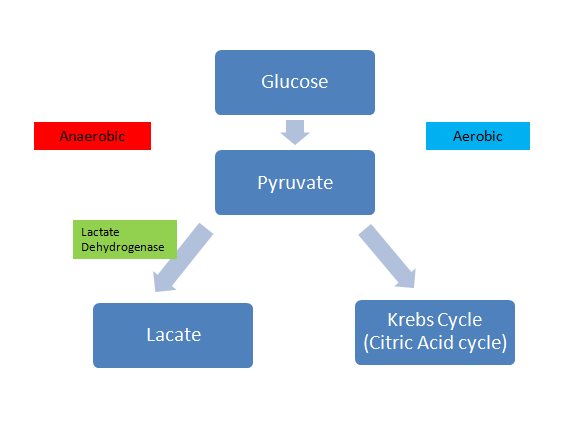An elderly woman was admitted as an emergency after collapsing in the street, was deeply comatose. A clinical examination showed that she had a ruptured aortic aneurysm leading to shock and circulatory failure.
Her results were:
[H+] = 90 nmol/L pH = 7.05
|
What is his acid base disturbance in this case?
(Choose one of these and then click to see if you are correct)
Compensated metabolic acidaemia is expected but due to his comatose state hypoventilation takes place resulting in respiratory acidaemia.
Circulatory failure result in metabolic acidaemia and hypoventilation results in respiratory acidaemia.
Yes, he has got a metabolic acidaemia but you would expect a compensatory respiratory alkalaemia which is not present in this case because of his comatose state resulting in hypoventilation.
You are partially correct but this is a mixed acid base disturbance.
Circulatory failure and shock (following a ruptured aortic aneurysm, in this case) result in metabolic (= lactic) acidaemia. This is due to hypovolaemia and poor circulation leading to a net anaerobic state. She is hypoventilating as a consequence of his comatose state, causing the respiratory acidaemia. These sorts of results are commonly seen in patients with cardiorespiratory arrest.

What Would be Your Key Management Strategies for This Patient?
As you can imagine with rupture of one of the main arteries in the body, blood loss can be significant. Blood pressure is linked to circulating volume and as this falls, so too does blood pressure. With decreased blood pressure, ischaemia of major organs is a real possibility. These can include kidney, liver and brain all of which are vulnerable to ischaemia and without intervention may lead to catastrophic damage. This may be managed by replacement of fluids and inotropic support.
Whilst, as above it is important to replace the fluid volume lost to the extravascular space there may be a better answer to this question.
This is a life threatening bleed, as such, activation of the major haemorrhage protocol (Acessed by 2222) and use of various blood products would be required to resuscitate this lady. Make sure you are aware of who you will have at your disposal on activation of this protocol.
This will be the definitive treatment for this lady and the fastest she can be taken to theatre the better prognosis she will have. Treatment is usually via a graft to replace the ruptured anneurysm. Note in this case it would be done as emergency surgery, there is a screening program for anyone with a known AAA and with these individuals it may be possible to plan an elective procedure prior to rupture.
Unfortunately despite the above measures, this lady was taken to theatre where she arrested and died. Due to her advanced age her physiological reserve was low. The A+E team debrief on what was a difficult case and you agree there were no changes to practice which should have been made in the lady’s management.
Well done you have completed this case.
